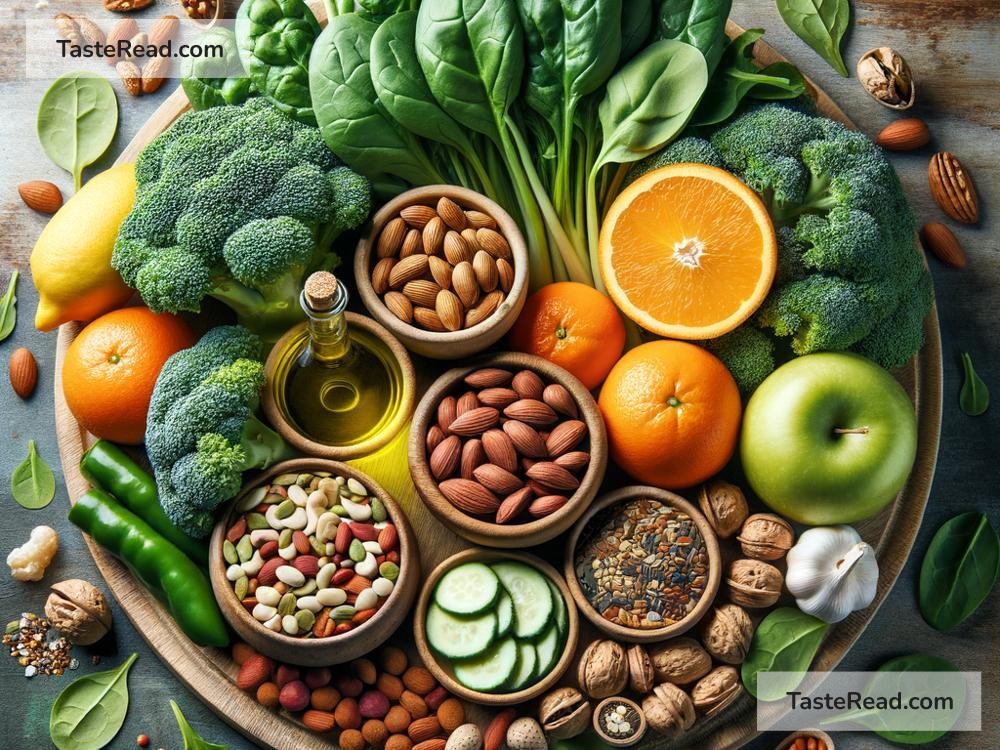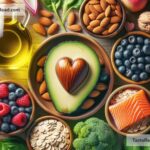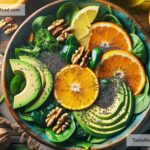Foods That Promote Healthy Clotting: What You Should Know
Blood clotting may not be something you think about every day, but it plays a vital role in keeping you healthy. When you get injured, your blood forms clots to stop the bleeding and repair damage. This ability is essential for survival. However, problems can arise when clotting is either too weak (leading to excessive bleeding) or too strong (causing dangerous clots that can block blood flow).
Thankfully, the foods you eat can support healthy clotting by providing your body with the nutrients it needs to regulate this delicate process. In this blog, we’ll explore some of the best foods for promoting healthy blood clotting and how they work.
Why Healthy Clotting Is Important
Blood is like the body’s transportation system, carrying oxygen, nutrients, and waste products to keep everything running smoothly. When you’re injured or have internal damage, the process of blood clotting helps prevent excessive blood loss. Specialized proteins called clotting factors, along with platelets (tiny blood cells), work together to form a plug that seals wounds.
However, blood clotting needs to be balanced. If the body can’t clot properly, you’re at risk for bruising and bleeding even from minor injuries. On the flip side, excessive clotting can lead to life-threatening conditions like strokes, heart attacks, or pulmonary embolisms.
The good news? Certain foods can help maintain this crucial balance, ensuring blood clots when it’s needed—without going overboard.
Key Nutrients Involved in Blood Clotting
Before diving into specific foods, let’s quickly look at the nutrients that play a role in healthy clotting:
-
Vitamin K: This vitamin is essential for activating clotting proteins in your body. Without enough vitamin K, your blood won’t clot properly.
-
Iron: Iron helps your body produce hemoglobin, a protein in red blood cells. It also contributes to healthy platelets, which assist clotting.
-
Vitamin C: While not directly involved in clotting, vitamin C helps strengthen blood vessels, reducing the risk of excessive bleeding.
-
Omega-3 Fatty Acids: These healthy fats help keep blood vessels in good condition and may reduce the risk of dangerous clot formation.
-
Protein: Protein-rich foods provide amino acids, which are needed to form clotting factors in the blood.
Foods That Promote Healthy Clotting
Here are some nutrient-dense foods that can help support proper blood clotting:
1. Leafy Greens
Leafy greens like spinach, kale, and broccoli are rich in vitamin K, which is crucial for clotting. Eating even a small serving of these greens can contribute to your vitamin K intake for the day. In fact, one cup of raw kale provides more than 100% of your daily vitamin K needs.
2. Liver
Organ meats like liver are packed with iron and vitamin K. These nutrients support both the formation of red blood cells and proper clotting. While liver may not be everyone’s favorite, enjoying it occasionally can give your body a boost.
3. Fatty Fish
Salmon, mackerel, and sardines are excellent sources of omega-3 fatty acids, which help reduce inflammation and support healthy blood flow. These fats balance clotting by preventing excessive aggregation of platelets, which can sometimes lead to harmful clots.
4. Citrus Fruits
Oranges, lemons, and grapefruits are rich in vitamin C, which strengthens blood vessel walls and promotes better circulation. Healthy vessels play an important role in preventing bruising and ensuring that clots form when needed.
5. Nuts and Seeds
Almonds, walnuts, and chia seeds provide a combination of healthy fats and protein. They’re not only heart-healthy but also contribute to balanced blood clotting. Snack on a handful of these nutrient-rich foods for a tasty addition to your diet.
6. Whole Grains
Whole grains like oats, quinoa, and brown rice contain iron, which supports both the production of red blood cells and the function of platelets. They’re also full of fiber, which maintains healthy circulation and reduces the risk of clotting issues.
7. Beans and Lentils
Rich in iron and protein, beans and lentils are excellent plant-based options for supporting blood clotting. Black beans, chickpeas, and lentils are especially versatile and can be added to soups, salads, or casseroles.
8. Eggs
Eggs are a simple, affordable source of protein, which your body uses to produce clotting factors. They also contain small amounts of iron and other minerals that support healthy blood production.
Foods to Be Cautious About
While you want foods to promote clotting, some foods can thin the blood or interfere with clotting in excess. For example:
- Garlic and ginger may reduce the activity of platelets.
- Aspirin-like compounds in certain foods (like strawberries or cherries) can increase bleeding risk.
If you’re on blood-thinning medication or have a clotting disorder, speak with your doctor before making major dietary changes.
Final Thoughts
Blood clotting is a vital function that keeps you safe after injuries. Eating a balanced diet that includes vitamin K-rich leafy greens, iron-packed beans and lentils, and omega-3 fatty acid-rich fish can help regulate this process. Pair these healthy foods with regular check-ups and hydration for optimal blood health.
Remember, while food can contribute to healthy clotting, it’s always a good idea to consult a healthcare provider if you have concerns about bleeding or clotting issues. A small adjustment in your diet can go a long way in keeping your blood’s clotting ability in top shape!


